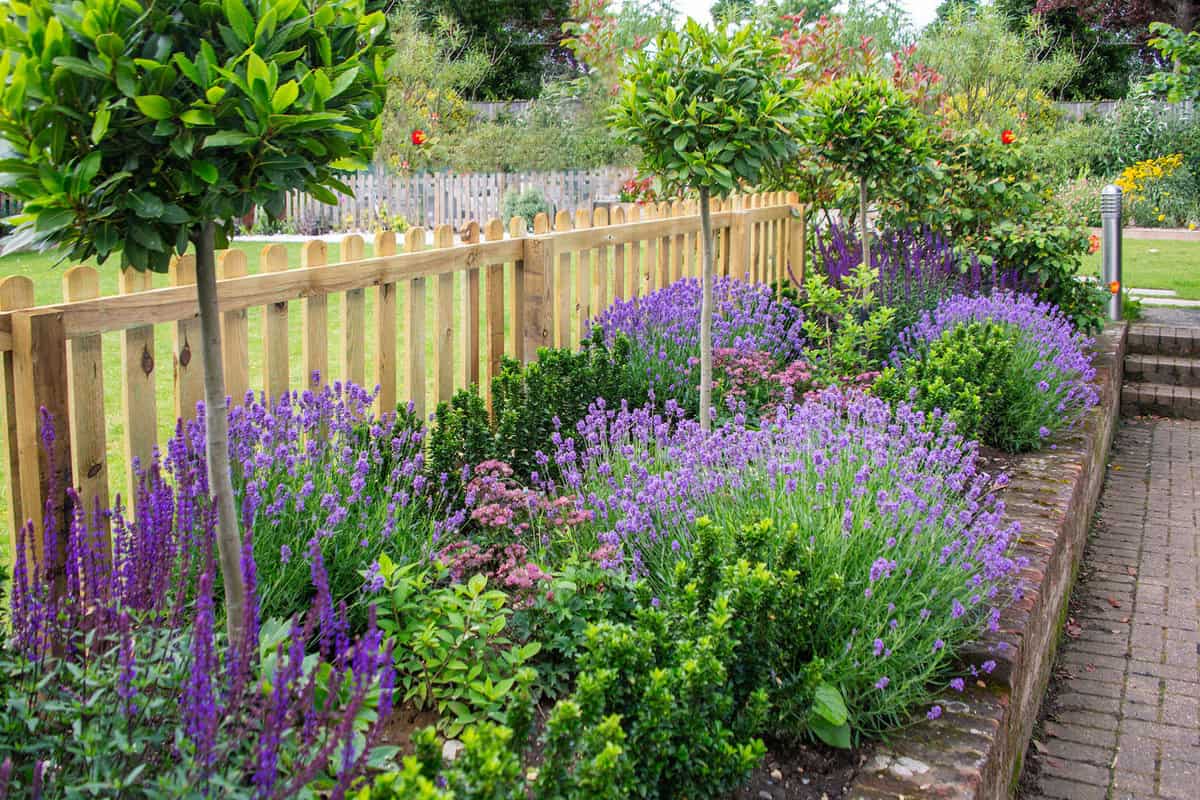With its captivating purple blooms and tranquil aroma, lavender is a beloved choice for many gardeners.
Its easy-to-care-for nature and undeniable beauty make it a standout in many landscapes.
But before you plant this fragrant wonder in your garden, there's an essential detail to address: its root system.

The question on many gardeners' minds is, "Does lavender have invasive roots that might disturb neighboring plants or structures?"
The answer is no. Lavender does not have invasive roots. However, understanding its growth pattern can still be crucial for optimal garden planning.
Dive in and explore more about lavender and how best to nurture it in your outdoor spaces!
Understanding Lavender
If you're thinking of growing lavender, it's essential to understand this popular herb's different species and growth habits.
Here are some things you should know:
Lavender Species
There are many species of lavender, but the two most commonly grown for their fragrant blooms and essential oils are English lavender (Lavandula angustifolia) and French lavender (Lavandula stoechas).
English lavender is hardy and can tolerate colder temperatures, while French lavender prefers warmer climates.
Lavender Growth Habits
Lavender is a hardy perennial that can grow up to three feet tall and wide.
It has a bushy growth habit and produces fragrant purple or pink flowers in the summer. Lavender prefers full sun and well-draining soil, but it can also tolerate some shade and clay soil.
Lavender roots are slow-growing and typically not invasive, with a growth rate of about one foot per year.
However, lavender can self-seed and spread if given the right conditions, such as moist soil and lack of pruning.
To keep your lavender patch under control, it's best to prune regularly or dig up the seedlings and replant them in a different location.
Related Post: Can Lavender Grow In Clay Soil?
Root System of Lavender
If you're planning to grow lavender in your garden, it's essential to understand its root system.
Lavender plants have a moderately growing habit, and their roots grow up to 8-10 inches inside the soil.
Here are some sub-sections to help you understand the root system of lavender:
Root Structure
The roots of lavender plants are thin and fibrous, making them ideal for absorbing water and nutrients from the soil.
They also have a shallow root system, meaning they don't spread very far. As a result, they are not considered invasive plants.
Root Depth
Lavender roots grow up to 8-10 inches deep in the soil. Planting lavender in well-draining soil is essential to prevent waterlogging, which can cause root rot.
If you're growing lavender in a pot, ensure the soil is loose and not packed tightly around the plant. This allows the roots to breathe and absorb nutrients better.
Related: Can You Grow Lavender From Dried Buds?
Invasiveness of Lavender
Lavender in Natural Habitats
Lavender is native to the Mediterranean region and grows in rocky, well-drained soil.
In its natural habitat, lavender doesn't have invasive roots. Instead, it has a deep taproot that helps it access water and nutrients in the soil.
Lavender in Gardening
In a garden setting, lavender is typically grown in well-drained soil and is not considered invasive.
When planting lavender, giving it enough space to grow is essential. Lavender plants should be spaced at least 12-18 inches apart to allow for proper air circulation and prevent overcrowding.
Additionally, it's best to plant lavender in a location that receives full sun and has good drainage. Lavender doesn't like wet feet, so avoid planting it in areas prone to standing water.
Regarding companion planting, lavender is an excellent choice for attracting pollinators to your garden. It pairs well with other herbs like rosemary, thyme, and sage.
Managing Lavender Roots
Planting Tips
When planting lavender, it's essential to choose the correct location. Plant it in an area with plenty of room to grow.
You can plant lavender in a container or raised bed to prevent the roots from becoming invasive. This will help keep the roots contained and prevent them from spreading too far.
Pruning Techniques
Regular pruning can help keep lavender roots under control. Prune the plant in the spring to remove any dead or damaged branches.
This will help promote new growth and keep the plant healthy.
You can also prune the plant's roots to prevent them from becoming too invasive.
Use a sharp spade to dig around the plant and remove any excess roots carefully. Be careful not to damage the plant in the process.
Related: Lavender In Planters: Complete Guide To Care
In Closing
Lavender, in essence, isn't characterized by invasive roots. Though it gradually broadens its reach over time, it's seldom aggressive enough to disrupt the harmony of most gardens or landscapes.
Should you have reservations about your lavender claiming more space than you'd like, there are easy measures you can employ to maintain its bounds.
By giving your lavender a touch of TLC, you can revel in its picturesque beauty and serene scent while ensuring it remains a delightful guest, rather than an overbearing presence, in your garden!
